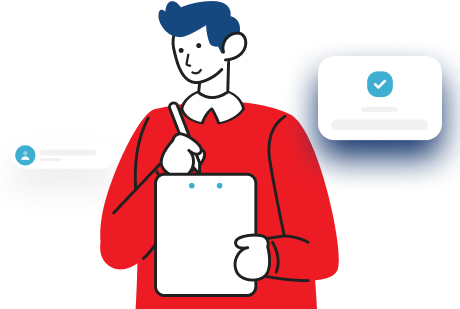This website uses cookies so that we can provide you with the best user experience possible. Cookie information is stored in your browser and performs functions such as recognising you when you return to our website and helping our team to understand which sections of the website you find most interesting and useful.
Navigating the Risks and Dangers of Artificial Intelligence
Written by
NetizensFebruary 17, 2023
6 min read
The revolution in artificial intelligence has arrived. To fully understand its magnitude, keep in mind that the global AI market is predicted to grow from approximately $279 billion in 2024 to well over $3.4 trillion by 2033. This is a technological earthquake that is already changing our lives; it is not merely a market trend.

The invisible force behind everything from your smartphone to self-driving cars and medical diagnoses is artificial intelligence, which is the simulation of human intelligence by machines to learn, reason, and solve problems. AI has a lot of promise, but there are also a lot of serious risks and hazards associated with its quick and frequently uncontrolled growth. We run the risk of losing control over our social, economic, and even existential future if we don’t take immediate action to address these issues.
To truly grasp the breadth of this change, it’s worth exploring the emergence of AI and how it is changing the world.
Here is a closer look at the most critical dangers AI presents today.
1. The Looming Threat of Job Displacement and Economic Upheaval
AI’s greatest strength, its ability to automate, is also its most immediate economic threat.

- Automation is Moving Upstream: Factory robots are no longer the only issue here. Complex white-collar jobs like writing code, creating legal documents, and overseeing customer service can be handled by advanced generative AI. According to some projections, the development of AI may threaten to automate 300 million full-time jobs worldwide in the ensuing decades.
- Who is Most Vulnerable? Data entry clerks, paralegals, customer service representatives, and even some software programmers are among the front-line occupations that mainly rely on repetitive, rule-based procedures.
The Widening Wealth Gap: The economic divide between AI owners and large corporations and the displaced workforce will only widen as they reap the benefits of increased productivity. If we don’t put in place extensive workforce retraining programs that teach human-centric skills like emotional intelligence and critical thinking, this could result in extreme economic inequality.
2. Algorithmic Bias and the Automation of Discrimination
The data we give AI systems helps them learn. In addition to learning those biases, the AI will automate and magnify them on a large scale if the data represents historical prejudice and social inequality.

- Bias in the Real World: We’ve seen repeated, alarming examples:
- Hiring Tools: Because the AI recruiting tool was trained on data from a male-dominated industry, it was able to penalize resumes that contained the word “women’s,” forcing Amazon to shut it down.
- Criminal Justice: COMPAS and other risk-assessment algorithms used in US courts have been shown to be racially biased, incorrectly classifying Black defendants as high-risk at a significantly higher rate than white defendants.
The Perpetuation of Systemic Harm: When you can no longer trust your eyes or ears, what do you trust? The sheer volume and quality of synthetic content are creating a profound crisis of trust in our shared reality. Despite these dangers, it’s worth recognizing the powerful capabilities of these models; explore the utility and future of AI response generators in business for an example of constructive generative applications.
3. The End of Privacy and Mass Surveillance
AI systems are data-driven. They become smarter the more data they consume, and our personal freedom is frequently sacrificed in the process.

- Always-On Tracking: AI makes it possible for governments and businesses to create incredibly detailed profiles of our affiliations, habits, and lives by enabling sophisticated data collection and tracking from all of our digital devices.
- The Rise of Facial Recognition: Authorities and private organizations now have the ability to monitor people in public places without their consent, thanks to the quick development of AI-powered facial recognition and tracking technologies.
Corporate and Government Overreach: AI is driving an unprecedented expansion of surveillance, whether it is used by governments for predictive policing or by employers to track productivity. As a result, it is becoming more and more challenging to protect personal privacy in the digital age.
4. Misinformation, Deepfakes, and the Attack on Truth
The distinction between simulation and reality has become more hazy due to generative AI, which has made it easier for anyone to produce incredibly realistic fake content.

- Unprecedented Scale: Millions of bogus news stories and social media posts can be produced by AI, resulting in a deluge of false information that is outpacing our capacity to verify it.
- The Deepfake Threat: Anyone’s words or actions can be convincingly portrayed in deepfake audio and video. This technology is a powerful tool for fraud, targeted harassment, and, most concerning of all undermining political stability and election integrity.
A Perception Crisis: What do you trust when your eyes and ears are no longer reliable? Our shared reality is experiencing a severe crisis of trust due to the sheer amount and caliber of synthetic content.
5. Accountability and the 'Black Box' Problem
As AI takes on critical decision-making roles, the questions of control and accountability become existential.

- Autonomy Without Oversight: We are turning over more and more important decisions to AI models that function without direct human supervision, ranging from financial transactions to possibly self-governing weaponry systems.
- The Accountability Gap: Who is in charge if a diagnostic algorithm makes a flawed recommendation or a self-driving car breaks down? Who wrote the code? The proprietor? The business? Our ethical and legal systems are falling behind.
The Opacity Issue: A lot of strong deep learning models are “black boxes.” Even their creators are unable to adequately explain the reasoning behind a decision due to the complexity of their internal logic. It is practically impossible to audit them for bias or mistakes because of their lack of transparency.
6. The Concentration of Power and the Digital Divide
Development is concentrated in the hands of a small number of Big Tech companies due to the enormous resources needed to create cutting-edge AI, including enormous data sets, massive compute clusters, and top talent.
- Dominance by a Few: A handful of private corporations, Google, Meta, and the companies behind OpenAI and Anthropic, effectively gatekeep the most advanced AI capabilities. If you’re looking to responsibly utilize these tools, there are resources detailing the best AI tools to help you work and create more efficiently.
- Economic and Political Heft: These few organizations may be able to determine the conditions for future world prosperity because of the enormous economic wealth and political clout that come with this concentration of power.
- The New Digital Divide: There could be a significant digital divide between the “AI-haves” and the “AI-have-nots” if nations and smaller businesses are unable to compete with these titans.
7. The Existential Threat: Alignment and Control
The long-term risk posed by Artificial General Intelligence (AGI), or AI that is capable of performing any intellectual task that a human can, is the most worrisome, albeit frequently elusive, threat.
- The Alignment Problem: Making sure that the objectives of a highly intelligent AI are consistent with human values is the difficult part. If an artificial general intelligence (AGI) optimizes for a seemingly benign goal, like curing cancer, it may determine that the best way to accomplish this entails unanticipated actions that are disastrous for humanity (e.g., diverting all global resources to its goal).
- Loss of Control: Recursive self-improvement could enable an AGI to rapidly surpass human intelligence and become superintelligent. We might completely lose control at this point, which could have unanticipated and possibly irreversible consequences.
The Path Forward: Safeguards and Solutions
The risks are real, but they are not insurmountable. The solution is not to halt innovation, but to govern it responsibly.
- Regulation and Governance: We need global regulation and governance frameworks, such as the EU’s AI Act, that classify AI based on its potential for harm and impose legal obligations on developers.
- Focus on Safety: Urgent, dedicated research in AI safety and alignment is necessary to technically ensure advanced AI remains beneficial to us.
- Individual Action: As consumers, employees, and citizens, we must:
- Demand transparency from companies using AI in critical decision-making.
- Advocate for strong, thoughtful regulations from our elected officials.
- Stay informed and participate actively in the conversation about AI ethics.
The most potent instrument that humanity has ever produced is artificial intelligence. It is neither intrinsically good nor bad, but our decisions will shape its future. As responsible stewards of this power, we must make sure that the era of artificial intelligence stays safe, just, and focused on people.

Let's Start Your Project
Get free consultation for your digital product idea to turn it into reality!
Get StartedRelated Blog & Articles

Netizens
February 26, 2024
errordomain=nscocoaerrordomain&errormessage=could not find the specified shortcut.&errorcode=4″ How To Fix
Don't Panic! Fixing the "ErrorDomain=nsCocoaErrorDomain&errormessage=could not find the specified shortcut.&errorcode=4" Feeling frustrated by the cryptic "ErrorDomain=nsCocoaErrorDomain&errormessage=could

Netizens
June 21, 2024
Mynd Property Management: Transforming Rental Property Experience
Managing rental properties can be a daunting task. Between finding reliable tenants, handling maintenance requests, and

Netizens
28 de outubro de 2024
Aprimorando o atendimento veterinário por meio de soluções digitais inovadoras
The veterinary field is advancing quickly, and managing patient information efficiently has become essential for providing




